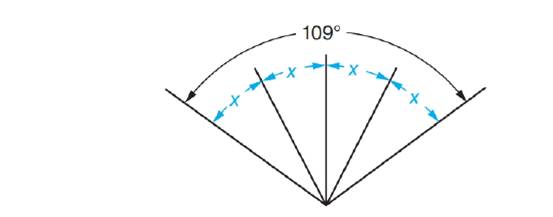
Mathematics for Machine Technology
7th Edition
ISBN: 9781133281450
Author: John C. Peterson, Robert D. Smith
Publisher: Cengage Learning
expand_more
expand_more
format_list_bulleted
Concept explainers
Textbook Question
Chapter 48, Problem 78A
Divide the angles in each of the following exercises.
Determine x.

Expert Solution & Answer
Want to see the full answer?
Check out a sample textbook solution
Students have asked these similar questions
Ju
at
© Ju
370
= x (-
пье
zxp
= c² (2² 4 )
dx²
ахе
2
nze
dyz
t
nzp
Q/what type of partial differential equation (PDE)
are the following-
Q
Calculate the Fourier series for
f(x) = x
on
the interval -16≤x≤ T
Find all positive integers n
such that n.2n +1 is a square.
Chapter 48 Solutions
Mathematics for Machine Technology
Ch. 48 - Refer to the Decimal-Inch Spur Gears Table under...Ch. 48 - If the cutting speed is 160 m/min and the...Ch. 48 - Solve the equation 28A2=(5+A)(2A)for A.Ch. 48 - Use the addition of equality to solve...Ch. 48 - If a=5.2,b=4.8,and c=7.25 ,what is the value of...Ch. 48 - Prob. 6ACh. 48 - Prob. 7ACh. 48 - Prob. 8ACh. 48 - Write the symbols for the following words. a....Ch. 48 - Express the following decimal degrees as degrees...
Ch. 48 - Express the following decimal degrees as degrees...Ch. 48 - Express the following decimal degrees as degrees...Ch. 48 - Express the following decimal degrees as degrees...Ch. 48 - Express the following decimal degrees as degrees...Ch. 48 - Express the following decimal degrees as degrees...Ch. 48 - Express the following decimal degrees as degrees...Ch. 48 - Express the following decimal degrees as degrees...Ch. 48 - Express the following decimal degrees as degrees...Ch. 48 - Express the following decimal degrees as degrees...Ch. 48 - Express the following decimal degrees as degrees...Ch. 48 - Express the decimal degrees as degrees, minutes,...Ch. 48 - Express the decimal degrees as degrees, minutes,...Ch. 48 - Express the decimal degrees as degrees, minutes,...Ch. 48 - Express the decimal degrees as degrees, minutes,...Ch. 48 - Express the decimal degrees as degrees, minutes,...Ch. 48 - Express the decimal degrees as degrees, minutes,...Ch. 48 - Express the decimal degrees as degrees, minutes,...Ch. 48 - Express the decimal degrees as degrees, minutes,...Ch. 48 - Express the decimal degrees as degrees, minutes,...Ch. 48 - Express the following degrees and minutes as...Ch. 48 - Express the following degrees and minutes as...Ch. 48 - Express the following degrees and minutes as...Ch. 48 - Express the following degrees and minutes as...Ch. 48 - Express the following degrees and minutes as...Ch. 48 - Express the following degrees and minutes as...Ch. 48 - Express the following degrees and minutes as...Ch. 48 - Express the following degrees and minutes as...Ch. 48 - Express the following degrees and minutes as...Ch. 48 - Express the following degrees and minutes as...Ch. 48 - Express the following degrees, minutes, and...Ch. 48 - Express the following degrees, minutes, and...Ch. 48 - Express the following degrees, minutes, and...Ch. 48 - Express the following degrees, minutes, and...Ch. 48 - Express the following degrees, minutes, and...Ch. 48 - Express the following degrees, minutes, and...Ch. 48 - Express the following degrees, minutes, and...Ch. 48 - Express the following degrees, minutes, and...Ch. 48 - Determine 1.Ch. 48 - Determine 2.Ch. 48 - Determine 3.Ch. 48 - Determine 1+2+3.Ch. 48 - Determine 5.Ch. 48 - Determine 6.Ch. 48 - Determine 7+8+9Ch. 48 - Determine 1+2+3+4+5.Ch. 48 - Subtract the angles in each of the following...Ch. 48 - Subtract the angles in each of the following...Ch. 48 - Subtract the angles in each of the following...Ch. 48 - Subtract the angles in each of the following...Ch. 48 - Subtract the angles in each of the following...Ch. 48 - Subtract the angles in each of the following...Ch. 48 - Subtract the angles in each of the following...Ch. 48 - Subtract the angles in each of the following...Ch. 48 - Subtract the angles in each of the following...Ch. 48 - Subtract the angles in each of the following...Ch. 48 - Multiply the angles in each of the following...Ch. 48 - Multiply the angles in each of the following...Ch. 48 - Multiply the angles in each of the following...Ch. 48 - Multiply the angles in each of the following...Ch. 48 - Multiply the angles in each of the following...Ch. 48 - In the figure shown, 1=2=42. Determine 3.Ch. 48 - IF x=3914,find 4.Ch. 48 - In the figure shown, 1=2=3=4=5=5403. Determine 6.Ch. 48 - Divide the angles in each of the following...Ch. 48 - Divide the angles in each of the following...Ch. 48 - Divide the angles in each of the following...Ch. 48 - Divide the angles in each of the following...Ch. 48 - Divide the angles in each of the following...Ch. 48 - Divide the angles in each of the following...Ch. 48 - Divide the angles in each of the following...Ch. 48 - The sum of the angles in figure equals shown...
Knowledge Booster
Learn more about
Need a deep-dive on the concept behind this application? Look no further. Learn more about this topic, advanced-math and related others by exploring similar questions and additional content below.Similar questions
- A straight-line H is tangent to the function g(x)=-6x-3+ 8 and passes through the point (- 4,7). Determine, the gradient of the straight-line Choose.... y-intercept of the straight-line Choose... + which of the following is the answers -1.125 -6.72 1.125 7.28 0.07 - 7.28 6.72arrow_forwardYou are required to match the correct response to each statement provided. Another term/word that can be used synonymously to Choose... gradient. A term/phrase that is associated with Arithmetic Progression. Common difference → An identity matrix can be referred to as a Choose... ÷ What is the inequality sign that represents "at most"? VIarrow_forwardAffect of sports on students linked with physical problemsarrow_forward
- 26.1. Locate and determine the order of zeros of the following functions: (a). e2z – e*, (b). z2sinhz, (c). z*cos2z, (d). z3 cosz2.arrow_forwardQ/ show that: The function feal = Se²²²+d+ is analyticarrow_forwardComplex Analysis 2 First exam Q1: Evaluate f the Figure. 23+3 z(z-i)² 2024-2025 dz, where C is the figure-eight contour shown in C₂arrow_forward
- Q/ Find the Laurent series of (2-3) cos around z = 1 2-1arrow_forward31.5. Let be the circle |+1| = 2 traversed twice in the clockwise direction. Evaluate dz (22 + 2)²arrow_forwardUsing FDF, BDF, and CDF, find the first derivative; 1. The distance x of a runner from a fixed point is measured (in meters) at an interval of half a second. The data obtained is: t 0 x 0 0.5 3.65 1.0 1.5 2.0 6.80 9.90 12.15 Use CDF to approximate the runner's velocity at times t = 0.5s and t = 1.5s 2. Using FDF, BDF, and CDF, find the first derivative of f(x)=x Inx for an input of 2 assuming a step size of 1. Calculate using Analytical Solution and Absolute Relative Error: = True Value - Approximate Value| x100 True Value 3. Given the data below where f(x) sin (3x), estimate f(1.5) using Langrage Interpolation. x 1 1.3 1.6 1.9 2.2 f(x) 0.14 -0.69 -0.99 -0.55 0.31 4. The vertical distance covered by a rocket from t=8 to t=30 seconds is given by: 30 x = Loo (2000ln 140000 140000 - 2100 9.8t) dt Using the Trapezoidal Rule, n=2, find the distance covered. 5. Use Simpson's 1/3 and 3/8 Rule to approximate for sin x dx. Compare the results for n=4 and n=8arrow_forward
- 1. A Blue Whale's resting heart rate has period that happens to be approximately equal to 2π. A typical ECG of a whale's heartbeat over one period may be approximated by the function, f(x) = 0.005x4 2 0.005x³-0.364x² + 1.27x on the interval [0, 27]. Find an nth-order Fourier approximation to the Blue Whale's heartbeat, where n ≥ 3 is different from that used in any other posts on this topic, to generate a periodic function that can be used to model its heartbeat, and graph your result. Be sure to include your chosen value of n in your Subject Heading.arrow_forward7. The demand for a product, in dollars, is p = D(x) = 1000 -0.5 -0.0002x² 1 Find the consumer surplus when the sales level is 200. [Hints: Let pm be the market price when xm units of product are sold. Then the consumer surplus can be calculated by foam (D(x) — pm) dx]arrow_forward4. Find the general solution and the definite solution for the following differential equations: (a) +10y=15, y(0) = 0; (b) 2 + 4y = 6, y(0) =arrow_forward
arrow_back_ios
SEE MORE QUESTIONS
arrow_forward_ios
Recommended textbooks for you
 Mathematics For Machine TechnologyAdvanced MathISBN:9781337798310Author:Peterson, John.Publisher:Cengage Learning,
Mathematics For Machine TechnologyAdvanced MathISBN:9781337798310Author:Peterson, John.Publisher:Cengage Learning,
 Algebra: Structure And Method, Book 1AlgebraISBN:9780395977224Author:Richard G. Brown, Mary P. Dolciani, Robert H. Sorgenfrey, William L. ColePublisher:McDougal Littell
Algebra: Structure And Method, Book 1AlgebraISBN:9780395977224Author:Richard G. Brown, Mary P. Dolciani, Robert H. Sorgenfrey, William L. ColePublisher:McDougal Littell Elementary AlgebraAlgebraISBN:9780998625713Author:Lynn Marecek, MaryAnne Anthony-SmithPublisher:OpenStax - Rice University
Elementary AlgebraAlgebraISBN:9780998625713Author:Lynn Marecek, MaryAnne Anthony-SmithPublisher:OpenStax - Rice University

Mathematics For Machine Technology
Advanced Math
ISBN:9781337798310
Author:Peterson, John.
Publisher:Cengage Learning,


Algebra: Structure And Method, Book 1
Algebra
ISBN:9780395977224
Author:Richard G. Brown, Mary P. Dolciani, Robert H. Sorgenfrey, William L. Cole
Publisher:McDougal Littell

Elementary Algebra
Algebra
ISBN:9780998625713
Author:Lynn Marecek, MaryAnne Anthony-Smith
Publisher:OpenStax - Rice University

01 - Angles and Angle Measure in Degrees - Part 1 - Types of Angles & What is an Angle?; Author: Math and Science;https://www.youtube.com/watch?v=hy95VyPet-M;License: Standard YouTube License, CC-BY